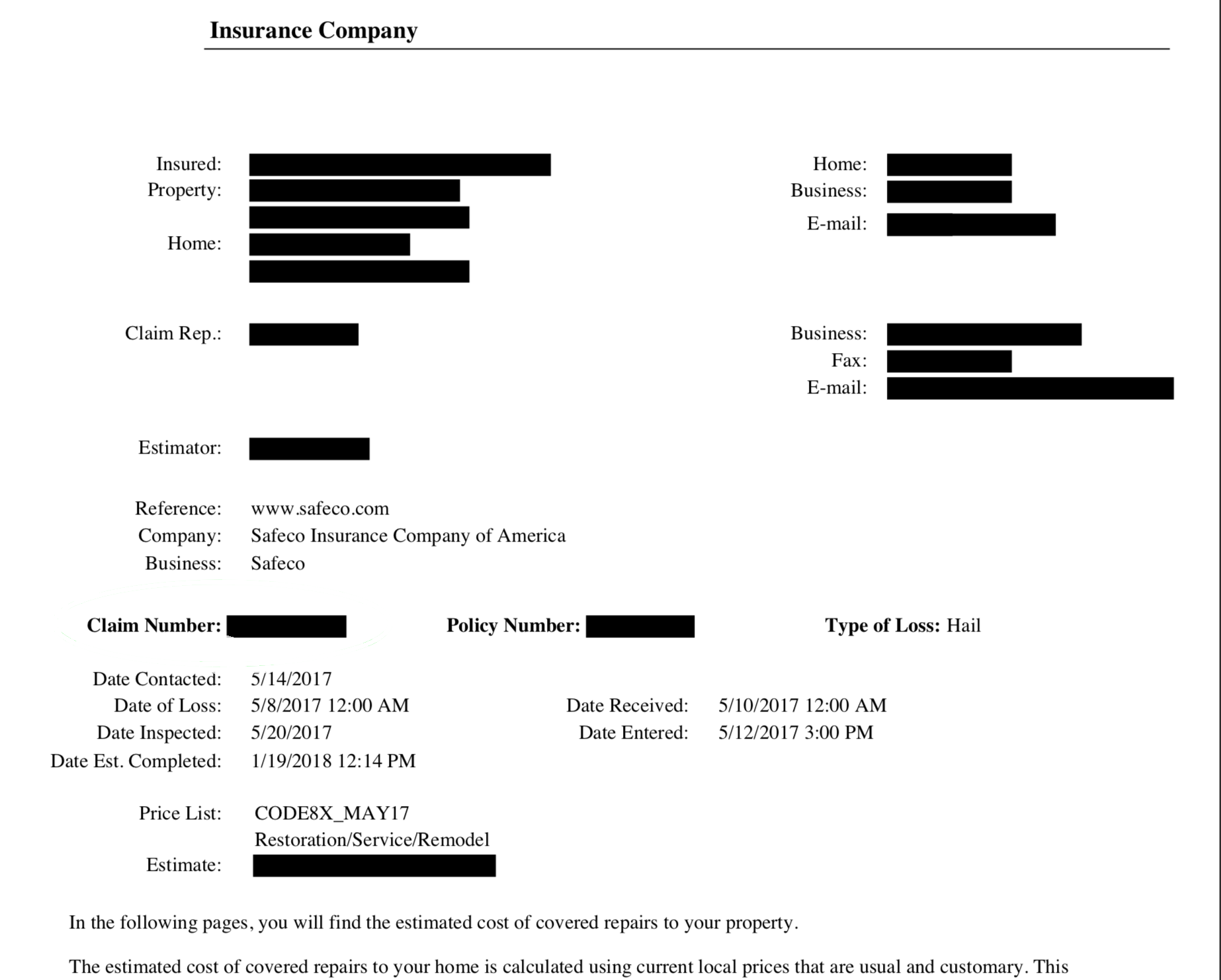Deciphering Your Insurance Claim: Understanding the Scope of Loss
Facing storm damage to your home can be a daunting experience, especially when it comes to navigating the insurance process. One crucial aspect of the insurance claim process is understanding the “scope of loss.” In this comprehensive guide, we’ll demystify the scope of loss, explaining what it is and how to interpret it effectively.
What is a Scope of Loss?
A scope of loss is a detailed assessment of the damage to your property conducted by insurance adjusters. It serves as a comprehensive documentation of the damage incurred during a storm or other covered event. The scope of loss outlines the extent of the damage and provides a roadmap for the necessary repairs to restore your home to its pre-loss condition.
SHOW YOUR SCOPE OF LOSS TO YOUR CONTRACTOR
Elements of a Scope of Loss
A typical scope of loss document includes several key elements:
- Description of Damage: The scope of loss begins with a thorough description of the damage sustained by your property. This description may include details such as roof damage, siding damage, window damage, and interior water damage.
- Photos and Documentation: To support the assessment, the scope of loss often includes photographs and documentation of the damage. These visual aids provide a clear understanding of the extent of the damage and help ensure accuracy in the assessment process.
- Measurements and Estimates: In addition to describing the damage, the scope of loss includes measurements and estimates for the cost of repairs or replacement. These estimates are based on industry standards and local market rates for labor and materials.
- Recommended Repairs: Based on the assessment of the damage, the scope of loss may also include recommendations for the necessary repairs to restore your home to its pre-loss condition. These recommendations serve as a guide for contractors and restoration specialists tasked with completing the repairs.
Interpreting the Scope of Loss
Understanding the scope of loss is essential for homeowners navigating the insurance claim process. Here are some key tips for interpreting the scope of loss effectively:
- Review Carefully: Take the time to review the scope of loss document carefully. Pay close attention to the description of the damage, the photos and documentation provided, and the estimated costs for repairs.
- Ask Questions: If you have any questions or concerns about the scope of loss, don’t hesitate to reach out to your insurance company or contractor for clarification. It’s important to have a clear understanding of the assessment and the recommended repairs.
- Ensure Accuracy: Verify that the scope of loss accurately reflects the damage sustained by your property. If you believe that certain aspects of the damage have been overlooked or inaccurately assessed, be sure to communicate your concerns to your insurance company.
- Work with Your Contractor: Your contractor can be a valuable resource in interpreting the scope of loss and advocating for your interests. They can help you review the document, identify any discrepancies, and ensure that all necessary repairs are included in the estimate.
Conclusion
In conclusion, understanding the scope of loss is crucial for homeowners navigating the insurance claim process in the aftermath of storm damage. By familiarizing yourself with the elements of a scope of loss and following these tips for interpretation, you can advocate for yourself and ensure that your insurance claim is processed accurately and fairly. Remember, the scope of loss serves as a roadmap for the restoration process, guiding you and your contractor through the necessary repairs to restore your home to its former glory.
I’m sure you have more questions then can be answered by a simple blog post. That is completely normal. An insurance claim can be a stressful and complicated time for many people. It is often the worst time of a homeowners life. The stress can build up and you may want to throw in the towel. Please don’t! There are plenty of contractors willing and able to help you through this trying time.
SBS-Exteriors can help you interpret this information with greater detail. Please give us a call, or fill out our form. We will be here for you, every step of the way.
